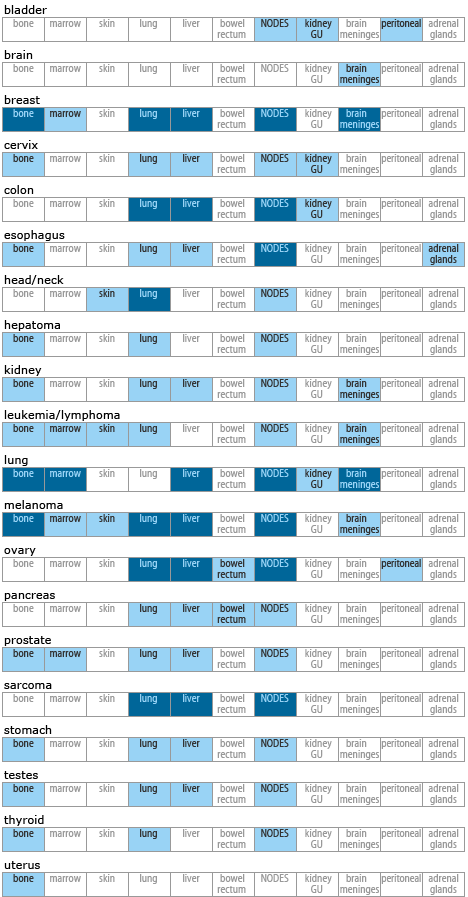Welcome Overview Pain Management Symptom Management |
 |
|
| Symptom Management in End-of-Life Care Anticipating the pattern of disease progression is one of the key elements of symptom management in end-of-life (EOL) care. For instance, if a patient with ovarian cancer has a new onset of constipation, the knowledge that the colon is a common site of metastasis for this type of cancer can guide the nurse in the assessment and treatment of this new symptom. Invasive and expensive tests can potentially be avoided and symptoms can be controlled, saving the patient undue distress. Moreover, distressing symptoms can be anticipated and planned for, providing time order the necessary medications that may be needed so there will be no delay in treatment. The table shown below, “Common Sites of Metastases” was developed by the Hospice and Palliative Nurses Association in their book, The Core Curriculum for Hospice and Palliative Nurses (2002). Always begin with a thorough assessment of the patient’s symptoms: know the diagnoses, pattern of progression and the medication profile of the patient before making treatment recommendations. Ask the patient assessment questions that include not only the physical body; it is important to also ask about the emotional and spiritual components of the patient’s distress to develop a holistic plan of care for the individual patient. Patterns of Metastatic Spread – Common Sites of Metastases (See key below chart.)  Blue = sites of metastasis. Darker blue = most common sites. Cancers that spread to the brain: breast, kidney, lung, and melanoma Cancers that spread to the bone: breast cervix, esophagus, liver, kidney, lung, melanoma, prostate, stomach, testes, and thyroid All cancers spread to the lung except: bladder, brain, and uterus |
||